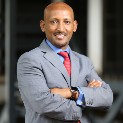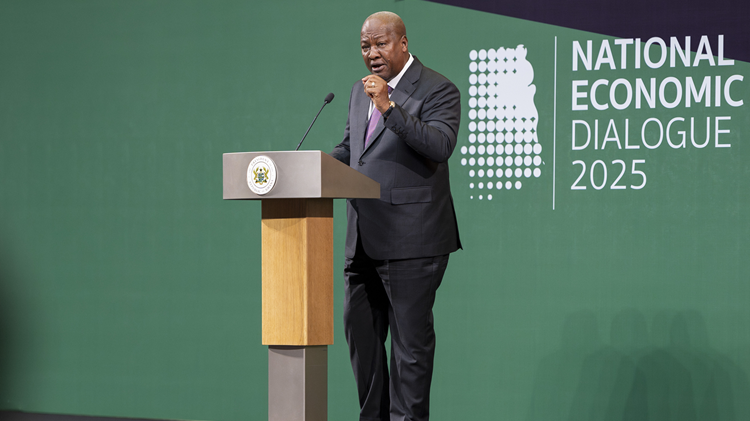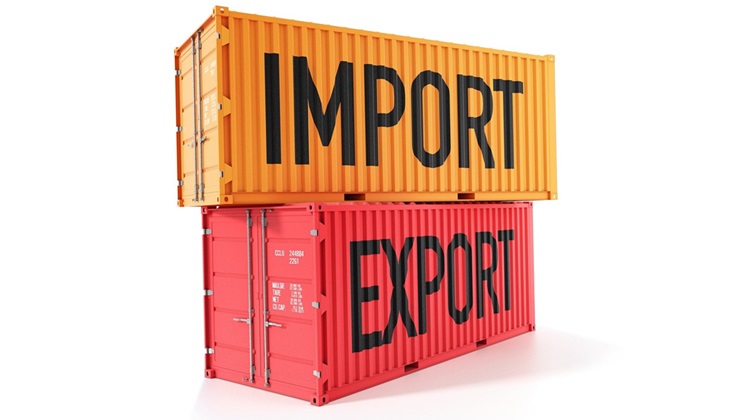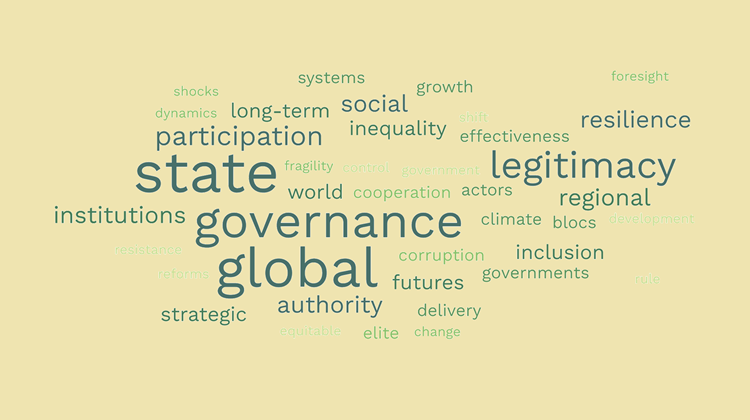Training African leaders
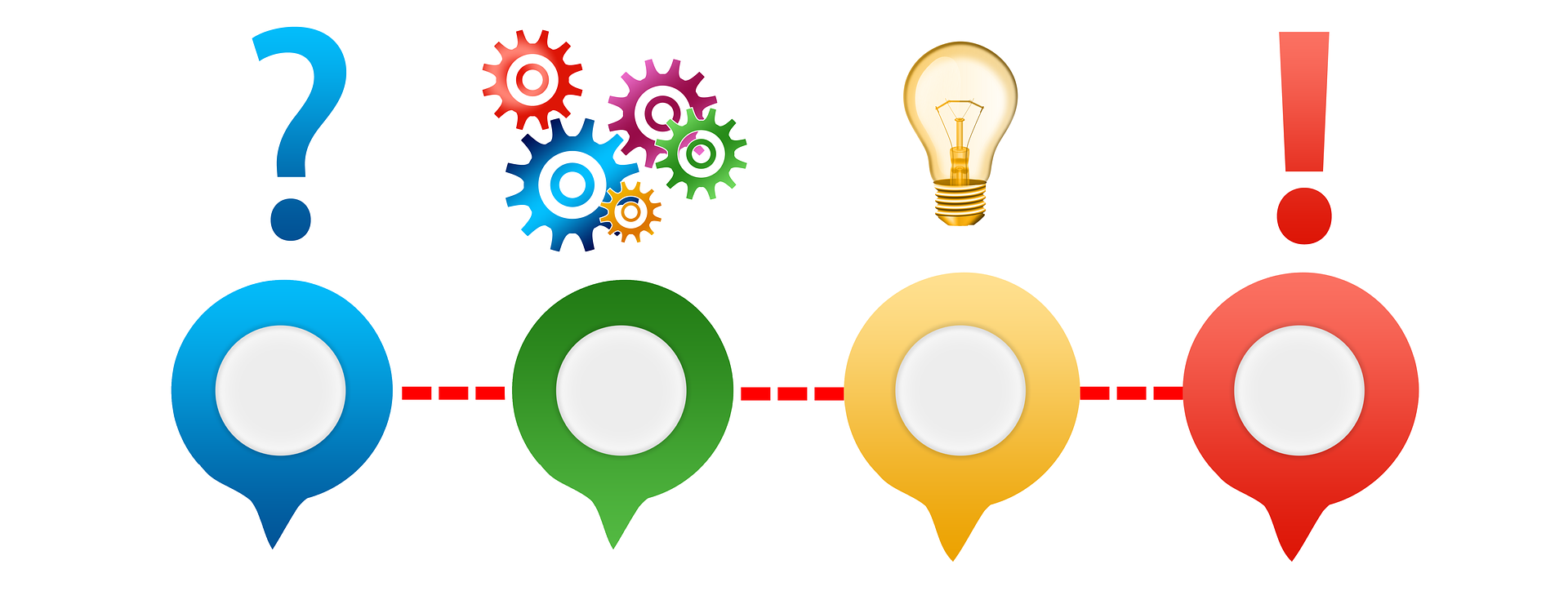
Bridging continents, shaping geopolitical agency: the stakes have never been higher for both Africa and Europe.
At the time of this writing, the latest casualty in President Donald Trump's administrative overhaul appears to be America's flagship soft power initiative—the United States Agency for International Development (USAID). The agency's website went dark on 1 February 2025, leaving thousands of staff in limbo and crucial programs frozen.
Among thousands of other initiatives that risk being affected, the Young African Leaders Initiative (YALI), a cornerstone of US-Africa engagement with young people, faces an uncertain future. The US$80 million programme, managed by Arizona State University, has been instrumental in cultivating the next generation of African leadership by fostering an understanding of Africa-US partnership through localisation efforts across the continent.
The shutdown contrasts sharply with the commitments of previous US administrations. At the December 2022 US-Africa Leaders Summit, then-Vice President Kamala Harris pledged US$100 million to expand YALI's reach. Now, that vision of continued partnership appears increasingly remote as Trump's administration dismantles one of America's primary soft power diplomacy tools.
The new administration’s radical disruption would create another vacuum in US-Africa educational and cultural diplomacy at a time when Africa's youthful population is becoming a significant geopolitical force. Europe, the US, Russia and China are all investing in various programs to court and influence their views. These powers recognise the key role that Africa's young people will play in shaping the future of international economics and geopolitics, highlighting the importance of engaging their leaders.
In the next seven years, 20% of the total 8.55 billion global population will be African. Further, by 2030, 42% of the world's youth and 75% of those under 35 will be in Africa. With 20 million new job seekers entering the market annually, Africa's workforce faces immense pressure. Economic migration theory, supported by studies of the Philippines and Mexico, shows that surplus labour and scarce job opportunities drive both internal and external migration. However, workforce mobility can ease local unemployment and raise wages for those who remain. While migration may improve living standards, its primary drivers remain the urgent need for jobs and the gap between labour supply and demand.
Africa's youthful population is becoming a significant geopolitical force
To realise a demographic dividend, African economies must achieve massive productivity increases. According to ISS projections, this potential dividend depends on two key factors:
First, the expanding workforce must have access to quality education, relevant skills development and adequate healthcare to boost economic productivity.
Second, the demographic window of opportunity—when the ratio of working-age people to dependants reaches 1.7 to 1—will only begin around 2054, underlining the need for increased female education and empowerment to bring that date forward.
Achieving the projected demographic changes and fostering job creation heavily relies on leadership with determination and effective governance. Failing to invest in leadership development now could turn Africa’s demographic advantage into a crisis.
African university students in Europe, the US, China and Russia: context in numbers
Europe is the leading destination for tertiary education students from Africa. In 2019, 42% of African students studying abroad were in Europe. In contrast, only 22% of African students studying abroad were pursuing their education in other African countries, making the continent itself the second destination for African students studying outside their home country. This is followed by 14% in America, 12% in Asia (mainly in China) and 8% in the Middle East.
The number of African students in Europe increased by 81 651 between 2016 and 2022, representing a 40.7% increase over these 6 years, averaging a 6.8% annual growth. In 2022, 17% (282 200) of the total 1.66 million foreign students studying in Europe were from Africa. Notably, more than half (52.5%) of university students from abroad in 2021 in France were from Africa, while this share was more than one-third (39.8%) in Portugal.
In the US, the total number of African students in 2008/2009 was 36 937, constituting 5.5% of total international students, and this figure declined to 4.3% in 2018/2019. Meanwhile, students from Asia and the Middle East showed an increase of 7 % and 2.5 %, respectively.
In contrast, in the same year, almost 17% of all foreign students studying in China came from Africa. The share of African students studying in China increased considerably (from 5.2% in 2009 to 16.6% in 2018), while the share of African students in the Americas decreased (from 10.7% in 2009 to 7.3% in 2018). China is attracting African students in higher education at a higher rate than others, growing 37 times in less than 15 years, and increasing by 258% between 2011 and 2017. In absolute numbers, however, China hosts only a third of the total number of Africans studying in Europe. Yet, since 2014, China has surpassed the US and the UK, each hosting around 40 000 African students annually.
In the academic year 2022/2023, 34 000 students from African countries enrolled in Russian institutions of higher education. This figure is twice that of 2018/2019, when about 17 000 African students were studying in Russia. Though significantly lower in absolute numbers compared to Europe or even China, the rate of increase in African students studying in Russia has recently shown a considerable growth of 261.7% between 2014/2015 and 2022/2023.
Global powers and African youth leadership development
EU-funded programmes such as Erasmus Mundus play crucial roles in attracting tens of thousands of African students. A majority are graduates from master’s degree courses (56.4%), while more than one-third (36.1%) graduated from bachelor’s degree courses and 6.4% from doctoral courses. Only 1.1% of the total students take short-cycle tertiary. The traditional educational bilateral and multilateral partnerships between African and Western countries have long centred on formal academic programmes. While these remain valuable, they often involve significant costs and extended periods away abroad. In response to changing needs, there has been a growing shift toward complementary shorter-term programmes.
This evolution has attracted diverse educational partners, notably the US and China, which have invested in combining short study tours with leadership training programmes. The US government's Young African Leaders Initiative (YALI), initiated by President Obama in 2014, is celebrating its tenth anniversary. Its flagship program, the Mandela Washington Fellowship, has trained more than 7 200 young African leaders from across sub-Saharan Africa. YALI commands an annual budget of over US$60 million and hosts around 700 fellows annually.
China, too, has stepped up its focus on training next-generation African leaders in political parties, governments, think tanks and business leaders. The Mwalimu Julius Nyerere Leadership School in Kibaha, Tanzania opened on 22 February 2022 and is funded by the Chinese Communist Party at US$40 million. In his inaugural message, President Xi Jinping of China stressed the need for strong ties between China and Africa and the sharing of governance experiences. The first class included 120 cadres from six Southern African ruling parties and the school plans to train nine batches annually. In his opening speech to the 8th Forum on China-Africa Cooperation (FOCAC) ministerial conference, Chinese President Xi Jinping stated that training for young Africans is one of the eight major initiatives where China will train ‘1 000 high-calibre Africans, provide Africa with 50 000 government scholarships, sponsor seminar and workshop opportunities for 50 000 Africans, and invite 2 000 African youths to visit China for exchanges.’
The shift reflects a broader recognition by the US and China that there is significant demand for more flexible, focused training programmes that can deliver specific skill sets while fostering partnerships and networking. In the area of short-term training for young African leaders, Europe is now lagging behind China and the US and risks losing its historical ties and influence in Africa, potentially impacting future partnerships and collaborations.
The Young African Leaders Programme (YALP), established in 2021, aims to bridge this gap by focusing on the implementation of the Africa-EU Partnership and the AU Agenda 2063. YALP fosters regional hubs established across the continent, collaborating closely with local partners and actively engaging YALP alumni. The residential leadership programme has trained 72 fellows and over 60 regional trainees (with women comprising 55% of participants) drawn from across Africa, including the Northern region. It has organised study tours, published over 40 studies through African Pathways, and conducted regional outreach events engaging over 300 participants—with notable events in Kampala (July 2022) focusing on migration governance, in Accra (July 2023) addressing climate finance, and in Pretoria (November 2023) examining Africa's geopolitical agency through foresight and scenario building methodologies. These initiatives aim to enhance direct engagement and local impact, solidifying YALP's role in shaping the future of African leadership and fostering stronger Africa-EU partnerships.
For Europe, there is also a more conceptual motivation that should inspire initiatives of this kind. Lately, the EU is branding itself as "geopolitical", pivoting to power politics in response to an increasingly competitive and emerging world order. The geopolitical events of the past three years, with wars raging in Ukraine, Sudan, Ethiopia and the Middle East, confirm the necessity for Europe and Africa to take new posture—one rooted in value- and rules-based multilateralism that both continents can champion. Initiatives like YALP aim not only to build capacity but also to foster dialogue among young leaders of Africa and Europe, contributing to efforts toward a shared vision.
Europe and Africa need to take a new posture, one rooted in value- and rules-based multilateralism
In a rapidly evolving global landscape, Africa’s youthful population represents an unparalleled opportunity to shape such multilateralism. However, realising this potential requires more than external training programmes or geopolitical courting. It demands visionary leadership, investments in education and job creation, and robust governance. While global powers vie for influence, Africa must boost and assert its agency, ensuring these engagements serve the continent’s long-term interests. To build a resilient leadership pipeline, training programs need to address the specific leadership development needs essential for Africa’s transformation. Africa must expand partnerships beyond dominant global powers, investing in intra-African collaboration and homegrown leadership programs that reduce reliance on external actors. The future of African leadership training must be self-determined, yet meaningful partnerships—particularly with Europe—can serve as catalysts for innovation, mutual learning and sustainable development. The evolution of global leadership programmes presents an opportunity for Africa and Europe to co-develop training models that align with the Africa-Europe Joint Vision for 2030. Europe's challenge is more than just a matter of catching up; it involves a commitment to long-term investments in leadership programs that will help propel Africa forward.
Image: geralt/Pixabay
